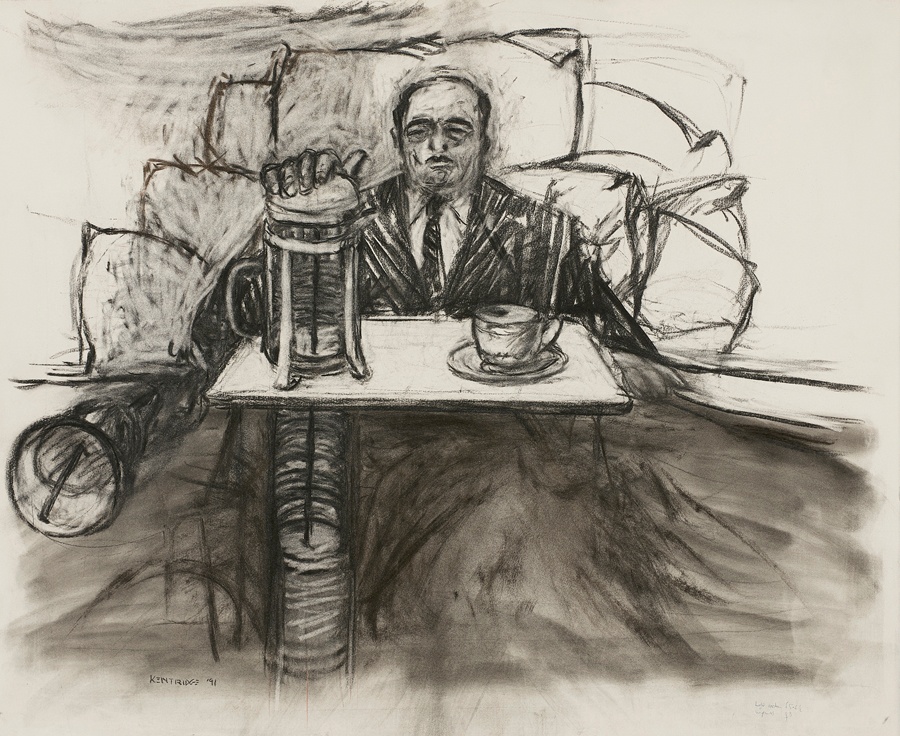William Kentridge

Moving images are the nexus of Kentridge’s practice, from his earliest animated films to his projections for theatre. As such, many of his static images – his drawings – are either made in preparation of movement or are the residue of movement past. Drawing from Mine (Soho with Coffee Plunger and Cup), taken from the film Mine (1991), proves a compelling example of the latter. The drawing shows the character of Soho Eckstein in bed. A ruthless industrialist in pinstripe suit, Soho is a metonym for the greed of white capital in shaping the South African apartheid landscape. He recurs often in Kentridge’s films as image and archetype, a character who seldom plays to our sympathies. In this scene, the plunger of Soho’s cafetière transforms into a sinking shaft, his bedding into the strata of rock. Down it plunges, deep into the mines over which he presides. While black workers labour underground, Soho counts his profits above, balancing lives lost and hardships suffered against his own growing wealth.
b.1955, Johannesburg
Performing the character of the artist working on the stage (in the world) of the studio, William Kentridge centres art-making as primary action, preoccupation, and plot. Appearing across mediums as his own best actor, he draws an autobiography in walks across pages of notebooks, megaphones shouting poetry as propaganda, making a song and dance in his studio as chief conjuror in a creative play. Looking at his work, a ceaseless output and extraordinary contribution to the South African cultural landscape, one finds a repetition of people, places and histories: the city of Johannesburg, a white stinkwood tree in the garden of his childhood home (one of two planted when he was nine years old), his father (Sir Sydney Kentridge) and mother (Felicia Kentridge), both of whom contributed greatly to the dissolution of apartheid as lawyers and activists. The Kentridge home, where the artist still lives today, was populated in his childhood by his parents’ artist friends and political collaborators, a milieu that proved formative in his ongoing engagement with world histories of expansionism and oppression throughout the 20th century. Parallel to – or rather, entangled with – these reflections is an enquiry into art historical movements, particularly those that press language to unexpected ends, such as Dada, Constructivism and Surrealism.
Moving dextrously from the particular and personal to the global political terrain, Kentridge returns to metabolise these findings in the working home of the artist’s studio, where the practitioner is staged as a public figure making visible his modes of investigation. Celebrated as a leading artist of the 21st century, Kentridge is the artistic director of operas and orchestras, from Sydney to London to Paris to New York to Cape Town, known for his collaborative way of working that prioritises thinking together with fellow practitioners skilled in their disciplines (for example, as composers, as dancers). Most often, he is someone who draws, in charcoal, in pencil and pencil crayon, in ink, the gestures and mark-making assured. In a collection of books for which A4 acted as custodian during the exhibition History on One Leg, one finds 200 publications devoted to Kentridge’s practice. In the end, he has said, the work that emerges is who you are.